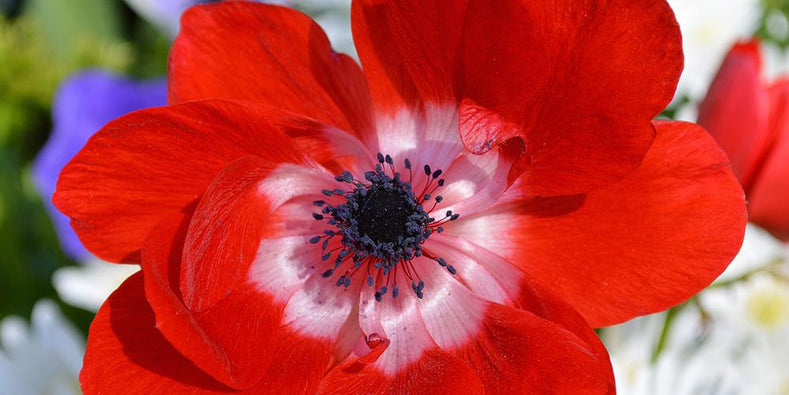Growing Guides:
How to Grow Anemone bulbs
Anemones, also known as windflowers, are easy to grow, prolific bloomers that add pops of jewel-like colour to the garden. A favourite amongst gardeners and florists alike, anemones are a wonderfully rewarding plant, each bulb – actually a corm - producing up to 20 flowers. Anemone bulbs / corms are fairly hardy and thrive in sunny positions or dappled shade. When planted in rich soil, they are more likely to seed and become naturalised.

Planting Eranthis bulbs:
Follow our simple step-by-step guide to planting anemone bulbs:
- Anemone bulbs are planted In Autumn, before the ground freezes. Pick a spot with good drainage.
- Anemone corms don’t look like bulbs at all – in fact, they look more like hard, shrivelled little claws! To make the most of the bulbs, before planting soak them in a bowl of lukewarm water for 2-4hours to soften then a little.
- Dig a hole around 5-7cm deep (follow the general rule of thumb when planting bulbs and give the bulbs at least 2 times their height of soil above them), drop the bulb in, and cover with soil. It is usually not possible to tell which side of the bulb the shoots will grow out of, but that's not a problem as whichever way up you plant anemone bulbs, the bulb figures it out and sends shoots up to the surface.
- Leave approximately 5cm between each bulb. If you are planting in containers, you can space them a little closer together.
- After planting, water well so that the soil above the bulbs settles.
- Anemone bulbs will flower in Spring. After the flowers die down, allow the plant to enjoy a rest period - there is no need to water much during this period. Leaves will also die back and at this point you can choose to tidy up the plant and remove the old leaves or just let nature take its course.

